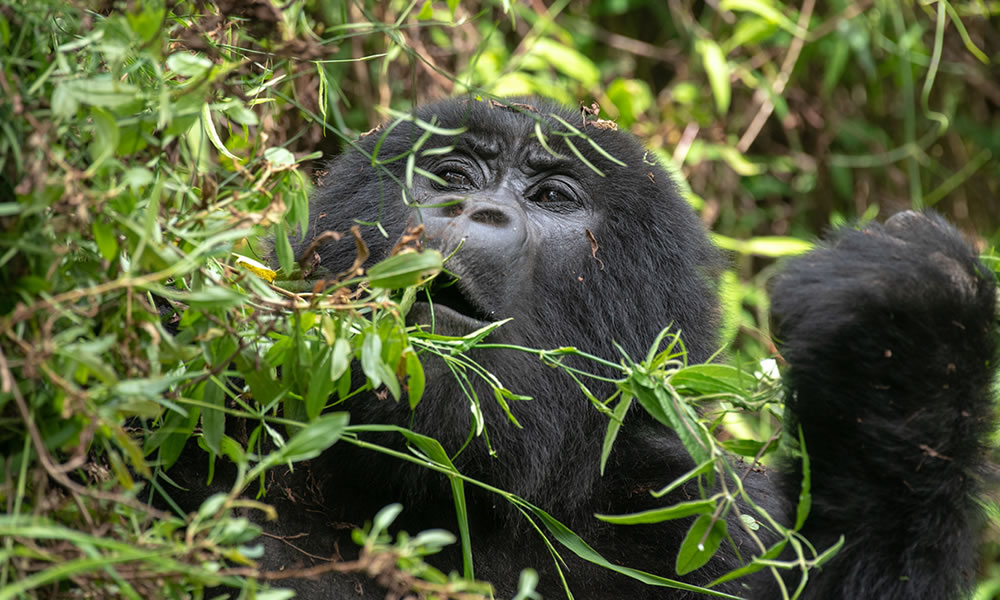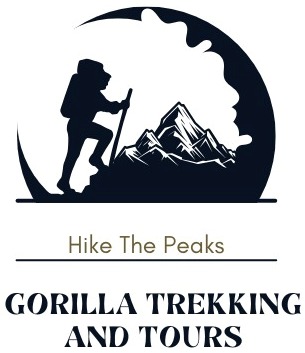Mgahinga Gorilla National Park is part of the wider Virunga conservation region, which also includes Rwanda’s Volcanoes National Park and the Democratic Republic of the Congo’s Virunga National Park. The park is located in the southwest corner of Uganda, close to the town of Kisoro. The primary goal of Mgahinga’s 1991 transformation from a wildlife reserve to a full national park was to protect the mountain gorillas, who were frequently at conflict with residents of both the park and the surrounding areas. Mgahinga is the smallest national park in Uganda, covering 34 square kilometres. The park’s name comes from the Kinyarwanda term “Gahinga,” which describes the small lava stones commonly found in gardens at the foot of the mountain.

Mgahinga is a small park, but its natural beauty really makes it stand out. Savannah grasslands, woods, tropical forests, marshes and swamps, bamboo forests, Afro-montane forests, bogs, and semi-alpine vegetation are the park’s main flora features. The three dormant volcanoes in the park, Mount Gahinga, Mount Sabyinyo, and Mount Muhabura, are its most notable characteristics. These mountains are a part of the vast Viringa mountain range, which also includes the mountains of Karisimbi, Bisoke, and Nyiragongo. A large portion of the park is located at high altitudes of 2,000 to 4,000 metres due to the three mountains.
The park’s climate is influenced by the mountains and dense forest cover, which brings chilly breezes and regular rains. One important water catchment region is Mgahinga Gorilla National Park. From the lakes and wetlands at the top of the mountain to the rivers and lakes at the base, several streams flow. Rivers like Ntebeko, Nyabirerema, and Kabiranyuma, which run up the mountainside, provide water to the native tribes that live close to the park.
Things to do in Mgahinga Gorilla National Park
Gorilla Tracking
Uganda is fortunate to have two national parks, Bwindi and Mgahinga where hiking with mountain gorillas is possible. In Mgahinga National Park, there are perhaps eighty mountain gorillas. The gorillas in Mgahinga have furrier coats than those in Bwindi Impenetrable Forest because they live at high altitudes. In Mgahinga, only the Nyakagyezi gorilla group is accessible to tourists. One of the two largest habituated groups of mountain gorillas in Rwanda, Uganda, and the Democratic Congo is the Nyakagezi group. The tribe has been residing in Uganda for the past five years, although they were once highly mobile and had a propensity to travel into Rwanda and even the Congo. Finding the Nyakagyezi group is quicker than finding certain Bwindi households.
In Mgahinga, gorilla trekking commences at 8 a.m. with briefing. The park rangers direct tourists to the group’s location following the briefing. Expect to see virgin forests, primates, birds, and other wild critters while tracking the gorillas. The amount of time needed to track the gorillas can range from two to three hours, depending on where the group is that day. Bring along a high-quality camera to record one of the most incredible animal encounters.
Golden Monkey Tracking
Golden monkeys are a subspecies of blue monkeys. Primates are indigenous to the Albertine Rift and Virunga mountain ranges in the Democratic Republic of the Congo, Rwanda, and Uganda. They are lovely because of their gorgeous golden coats. Golden monkeys are relatively little monkeys, weighing about twenty pounds when they reach adulthood. These are sociable, active primates that usually inhabit groups of up to eighty individuals. They spend much of their time atop trees and feed primarily on bamboo shoots and insects that are abundant on the slopes of volcanoes.
The golden monkey is among the primates that travellers to Africa are most eager to see. Only Rwanda (Volcanoes National Park) and Uganda (Mgahinga National Park) have habituated groups that are open to tourists. It could take anywhere from thirty minutes to three hours to track golden monkeys. The activity starts at 8 a.m. with a briefing. It is 85% likely that you will find the monkeys during a downpour since they hide during the rain because they can’t hear the eagles approaching. After finding the monkeys, visitors are only permitted to observe the group’s behaviour and snap photos for one hour.
Mountain Climbing
Climbing one of the three volcanoes in the park, Sabyinyo, Gahinga (3474), and Muhavura (4127m) is one of the most alluring activities in Mgahinga. Muhavura is said to be the youngest, and Sabinyo to be the oldest. The boundaries of Rwanda, Uganda, and the Democratic Republic of the Congo are shared by these three volcanoes. Mount Sabyinyo, rising to a height of 3669 metres, is the most well-liked volcano for hiking. A rare chance to stand simultaneously in Rwanda, the Democratic Republic of the Congo, and Uganda is presented by reaching the summit of Mount Sabyinyo. Mount Gahinga is the simplest climb, requiring around six hours to complete.
Three days is enough time to walk to the summit of each of the three volcanoes. Hikers who ascend all three volcanoes will be rewarded with breathtaking vistas over all three nations, the Rwenzori Mountains, the Bwindi Impenetrable Forest, the Virunga Mountain Range, crater lakes, marshes, and uncommon alpine plants. To hike any or all of the volcanoes, one must be in good physical and mental health.
Bird Watching
Mgahinga National Park is a top bird watching destination in Uganda. Mgahinga National Park is home to about 110 different species of birds in its lakes, mountains, forests, and caves. In Mgahinga Gorilla National Park, April and May and October and November are the finest times to go bird watching.
The following species should be kept an eye out for: Wax Bills, Thrush, Cinnamon Bracken Warbler, White-starred Robin, White-necked Raven, White-naped Raven, White Starred Robin, Western Green Tinker bird. The Rufous Chestened Swallow, the Regal Sunbird, the Rwenzori Nightjar, the Rwenzori Double-Collared Sunbird, the Southern Red Bishop, the Red-throated Alethe, and the Red-faced Woodland Warbler are among the Rwenzori birds that may be found in Rwanda.
Nature Walks
Mgahinga National Park’s immaculate forests, lakes, rivers, wetlands, and mountain slopes make for ideal locations for nature hikes. For a close-up look at some of the locals, like the Batwa, one of the walking trails leads up to the lovely village plantations. The Ugandan, Rwandan, and Democratic Republic of the Congo borders converge at a location reached by the border route atop Mount Sabyinyo. It takes roughly five hours to finish the walk, which passes through several vegetation types and offers views of the caldera on Gisozi hill and primates like golden monkeys. Great views of the park may also be seen from the summit of Gisozi hill.
The Batwa Trail and Cultural Visit
The Batwa people are the most fascinating of the many tribes who inhabit the region around the Mgahinga Gorilla National Park. Before being forced to leave the Mghinga forest in 1991 and reside in an area outside of it, the Batwa spent countless years there as hunters and gatherers. Everything was plentiful and simple when they were still in the forest. All they had to do was get up every morning and go gather honey, gather fruits, go hunting, or gather leaves from trees for medicine. There were no limits on their freedom of movement in the vast forest. Because so few other tribes dared to invade their forest, the Batwa rarely engaged in hostilities.
